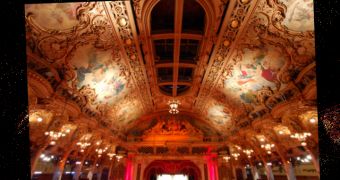Microsoft is offering the promise of a unique 3-D interactive experience of Britain. Via Microsoft Live Labs Photosynth, the Redmond Company will make available to users around the world three-dimensional photographic scenery illustrating in great detail historic landmarks in the United Kingdom. Microsoft informed that the initiative is a direct result of a collaboration with the British Broadcasting Corp. Users worldwide will be able to access a time-limited technical trial and navigate the images compiled in Microsoft's Live Labs Photosynth depicting Ely Cathedral, Burghley House, the Royal Crescent, Bath, the Scottish Parliament buildings and Blackpool Tower Ballroom.
"Photosynth is an extremely immersive experience where one can find oneself spending hours walking in the footsteps of the photographer and exploring minute details of the 3-D environment," said Adam Sheppard, group product manager for Microsoft Live Labs. "This opportunity with the BBC allowed us to test the limits of the Photosynth technology by integrating photographs from decades ago of the United Kingdom's historic sites along with those of the general public today. We're eager to see how people tell their stories with this new interactive medium."
According to Microsoft, the time-limited technology trial is offered in conjunction with the BBC's "How We Built Britain" television series. The 3-D interactive experience on is a research and development project for the Redmond Company, designed to map up the future of photo sharing, as is Photosynth. The service is compatible with Windows XP and Windows Vista and supports IE6, IE7, Firefox 1.5 and Firefox 2.0.
"Historical and user-submitted images will be integrated into the synths to contrast how people interacted with the locations in the past and present. By clicking and dragging their mouse, visitors to the site will be able to explore a building, zooming in to see the smallest decorative detail, or zooming out and panning through 360 degrees to place the building in a wider context," Microsoft revealed.

 14 DAY TRIAL //
14 DAY TRIAL //